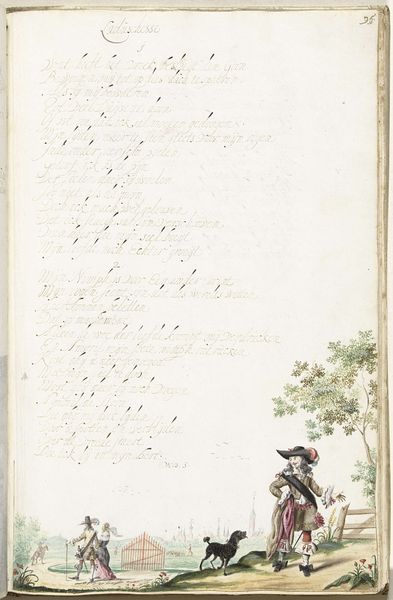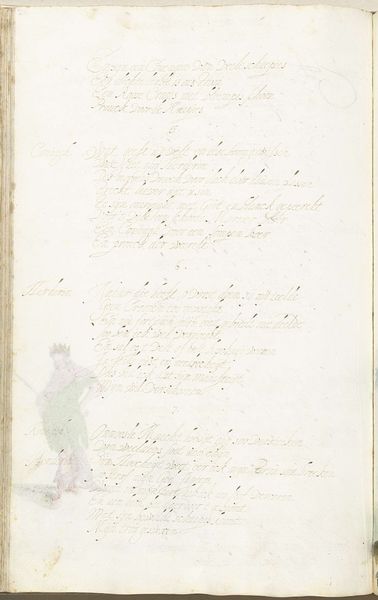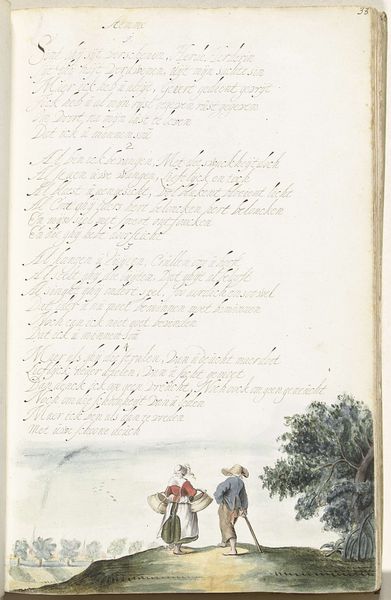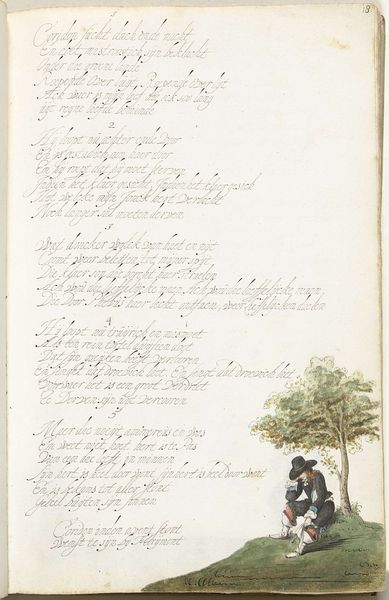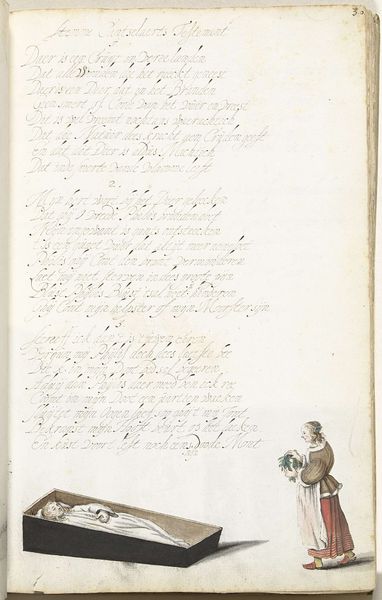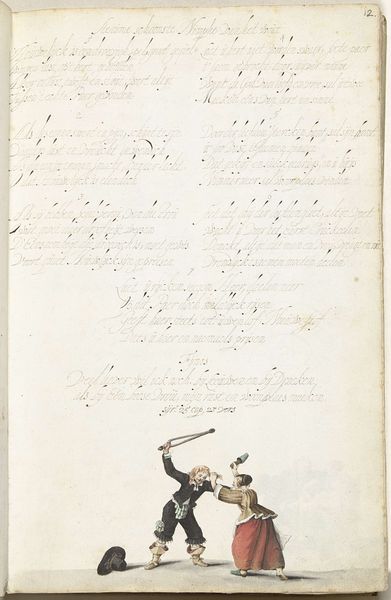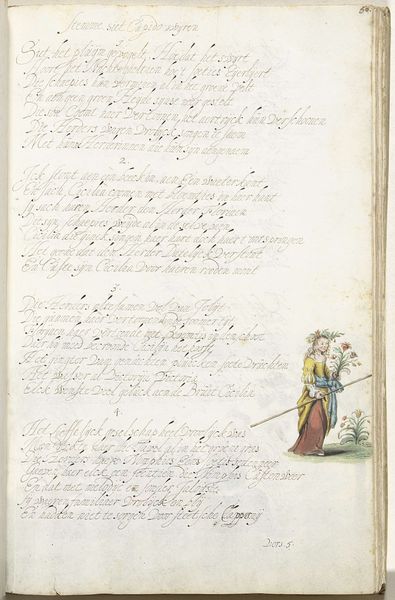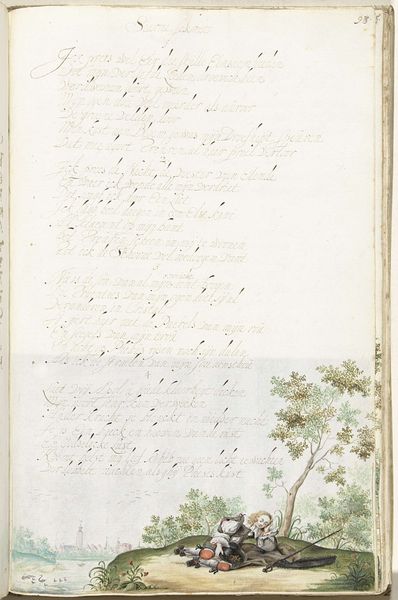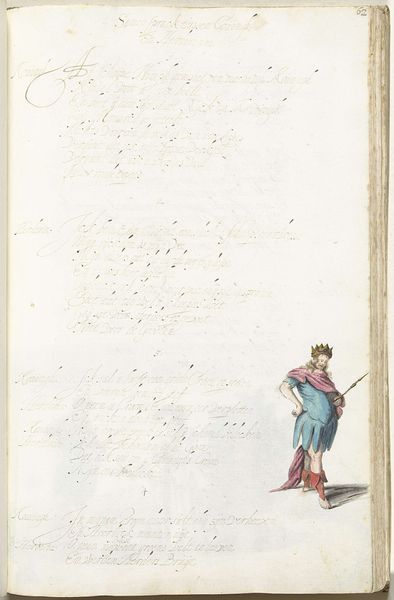
drawing, paper, watercolor
#
portrait
#
drawing
#
dutch-golden-age
#
landscape
#
paper
#
watercolor
#
coloured pencil
#
genre-painting
Dimensions: height 313 mm, width 204 mm
Copyright: Rijks Museum: Open Domain
Curator: Here we have “Lovers in a Formal Garden,” thought to be made around 1658 by Gesina ter Borch. It’s currently held in the Rijksmuseum. Editor: My initial reaction is that it’s so delicate. The fine lines and the use of watercolour lend it an ethereal quality. There's something so dreamlike about it. Curator: Absolutely. And it's fascinating when considering Ter Borch's position as a woman artist in the Dutch Golden Age. Drawings and watercolors on paper would have been considered "accomplishments" appropriate for women, blurring lines between fine art and craft. Editor: And that’s interesting in itself – how the formal garden depicted mirrors that same sense of control and artifice. Everything is structured, composed; a meticulously planned space. Curator: It's true; those controlled geometries of the garden serve as a visual representation of social order, yet juxtapose that against a very tangible material expression, through watercolor. Editor: I’m interested in the emotional narrative too. Note how the lovers occupy only a corner. It draws attention to the larger page. What story do the script and landscape play when woven together? Curator: Given the nature of the page and Ter Borch’s social circle, it would have been a custom album amicorum, with her additions, as this illustration and inscription, contributing to the community and circulation of these material items among her circle. Editor: It really pulls at the seams that divide intimacy, societal role, and a life committed to production and social bonds. And such nuance in its muted palette. Curator: Precisely. It's an interesting view into 17th century Dutch life viewed from a woman’s perspective. Thank you for allowing us to view it from different lenses. Editor: It has made me rethink the boundaries between personal expression and formal constraint. Thank you.
Comments
No comments
Be the first to comment and join the conversation on the ultimate creative platform.


